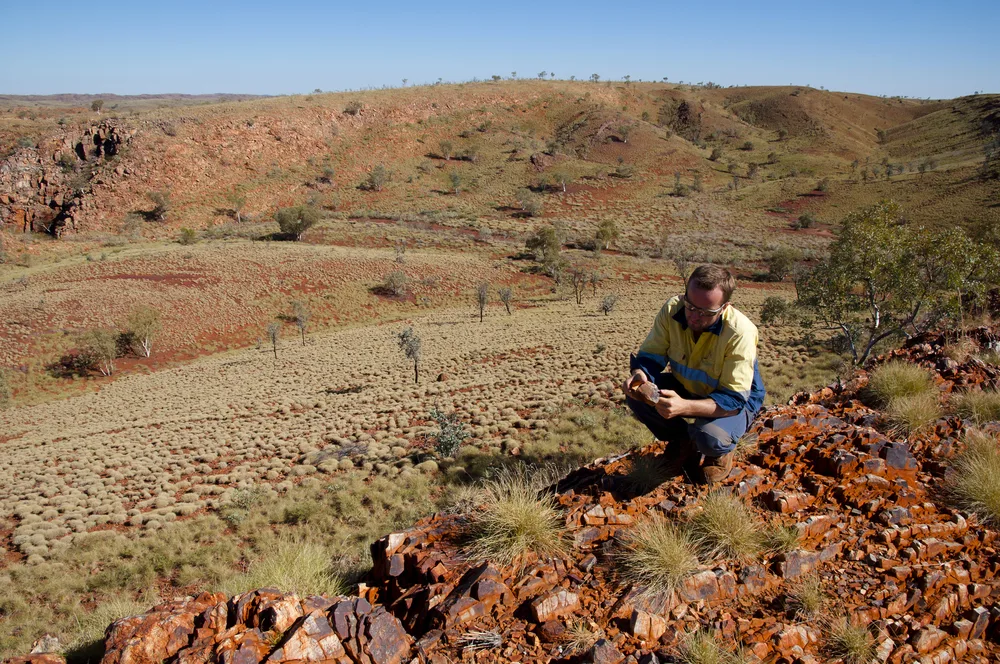Take a journey into the fascinating world of earth science and learn about the dynamic forces at work on, in and around the planet.
Earth sciences build on the enabling sciences such as chemistry and physics to understand the world around us. In turn, many other fields build on the geosciences making it essential for anyone interested in or working in agriculture, horticulture, environmental management, ecotourism and more.
Learn the science behind current environmental issues such as global warming and greenhouse gasses and investigate the complex interactions that drive climate and environmental conditions throughout the world. Discover the physical history of earth and the forces driving its changes and learn about rocks, minerals, gases, oceans and plate tectonics and much more. Study plate tectonics and understand earthquakes, eruptions, and the structure of the ground beneath our feet.
Earth Science Course Aims
- Describe the major structural elements of Earth and the major internal forces which affect them.
- Classify rocks and minerals according to their characteristics and formation.
- Explain external processes that that cause topographic and soil changes on the earth’s surface.
- Describe the oceans of the earth and their role in global processes.
- Describe the earth’s atmosphere and the forces which create weather.
- Describe some well known effects of particular atmospheric conditions like the Greenhouse effect.
- Identify global weather patterns and their relationship to different climates.
- Describe the way in which the earth’s surface has changed over time.
- Identify environmental issues which are of current significance.
There are 9 lessons in this course:
- Structure and Forces
- Scope and Nature of the Earth and it’s Structure
- Continental and Oceanic Crust
- Continental Drift
- Sea Floor Spreading
- Plate Tectonics
- Plate Boundaries; divergent boundaries, convergent boundaries
- Transform Faults
- Volcanoes; shield volcanoes, cinder cones, composite cones magma, pyroclastic flow
- Rocks and Minerals
- Definitions
- Mineral Properties; crystalline form, lustre, colour, streak, hardness, light transmission cleavage, fracture, etc.
- Mineral Groups
- Silicates
- Non Silicate Minerals
- Rocks; formation, texture
- Sedimentary Rocks; detrital, chemical and biochemical rocks
- Metamorphic Rocks
- Surface Changes
- Introduction
- Weathering
- Mass Wasting
- Erosion
- Glaciers
- Streams; birth of a stream, stream flow, deposited stream sediment
- Ground Water and Land Subsidence
- Aquifers and Confining Beds
- Soil; parent material, time, climate, life forms, slope
- Soil Profile, horizons
- The Oceans
- Scope and Nature of Oceans
- Sea Water
- Currents
- Coriolis Effect
- Geostrophic Flow
- Land Scale Currents
- Convergence and Divergence
- El Nino
- Waves
- Tides
- The Ocean Floor
- Shorelines
- The Marine Food Chain
- Air and Weather
- The Hydrological Cycle
- The Atmosphere
- Atmosphere and Circulation of Essential Elements
- Structure of the Atmosphere, Troposphere, Stratosphere, Mesosphere, Seasons
- Solar Radiation
- The Greenhouse Effect
- Weather
- Temperature Control
- Air Pressure
- Wind; Local Winds, Wind Erosion, Wind in Arid Climates
- Thunderstorms
- Tropical Cyclones
- Tornadoes
- The Greenhouse Effect
- Introduction
- Global Warming
- Anthropomorphic Changes to Global Climates
- Ozone Layer and Ozone Destruction
- Atmospheric Pollutants
- Global Weather Patterns
- Climate
- Climate Classification; Tropics, Dry Climates, Humid Mid Latitude and Mild Climates, Polar Climates, etc.
- Geological Time
- Geological Time Scale
- Relative Dating
- Inclusion
- Correlation
- Types of Fossils
- Radiometric Dating; radiocarbon dating, radioactivity, half life
- Geological Time
- Modern Environmental Issues
- Balance of Nature
- Major Current Environmental Events
- Resource Depletion
- Conservation Issues
- Pollution and Waste
What you will do:
- Research how a mountain/mountain range in or near your region was formed.
- Explain plate tectonics.
- Collect and classify rock samples as either sedimentary rock, igneous rock, or metamorphic rock.
- Describe four ways that weathering breaks down rocks to help form soil.
- Explain how the speed of a stream affects the shape of the landscape.
- Name the three main layers of the ocean, describe the characteristics and ocean life in each.
- Keep a record of atmospheric and weather changes in your environment.
- Explain the highs and lows associated with air pressure, and how they affect weather.
- Create a questionnaire to determine understanding of the Greenhouse Effect or the Ozone layer.
- Explain why your region has its overall climate.
- Research what life forms (plant and animal) inhabited your region before the formation of humans.
- Identify the rules and laws used to date fossils.
- Research an environmental problem in your area, and discuss possible solutions.

